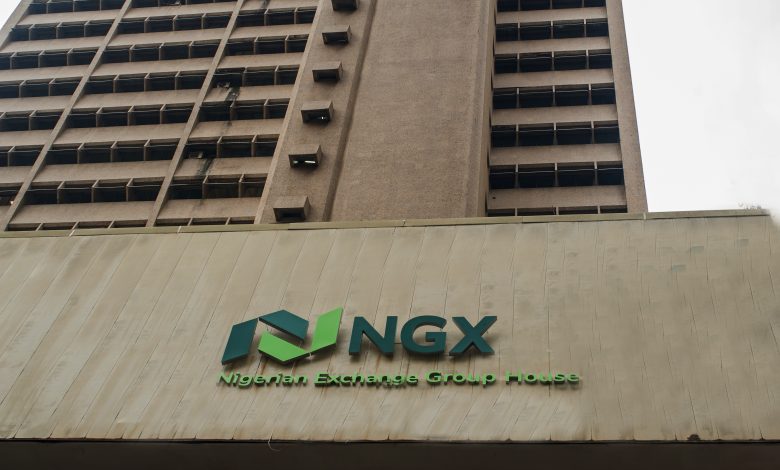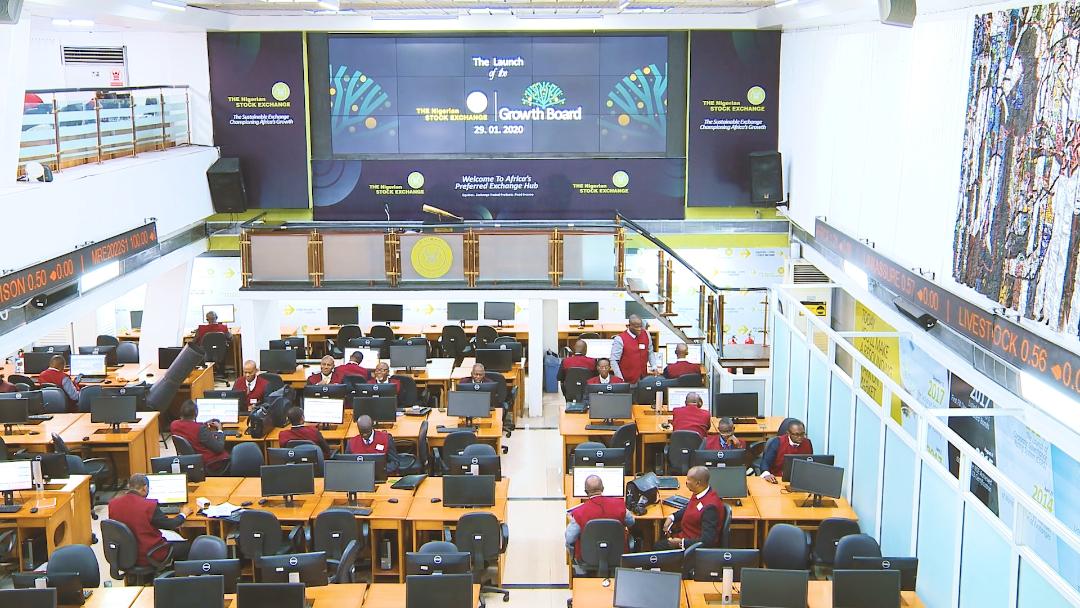Nigeria’s NGX Slips 0.24% As Profit Taking Deepens, Index Nears Key Support Amid Mixed Sector Moves

The Nigerian Exchange (NGX) opened the new trading week on a somber note, sustaining the sell-off that closed out last week’s session. Market participants were in a largely risk-off mood, leading to another round of profit-taking that cut across major sectors and key blue-chip names. The market’s performance reflected investors’ willingness to lock in gains from recent rallies, particularly as the quarter-end approaches, and portfolio managers begin to adjust their positions.
Trading activity was dominated by heavy sell pressure in some of the market’s most influential stocks. IKEJAHOTEL plunged 9.80 percent to lead the decliners’ chart, while Nigerian Breweries followed closely with a 7.64 percent drop as investors priced in weaker near-term consumer spending and input cost challenges. Honeywell Flour also lost 6.79 percent, while Oando, PZ, and UACN were down 5.76 percent, 5.31 percent, and 4.49 percent respectively. The banking sector was not immune to the sell-off, with UBA sliding 2.71 percent, GTCO falling 1.06 percent, and FIDELITYBK down 0.48 percent, contributing significantly to the overall bearish close.
The NGX All-Share Index (ASI) fell 0.24 percent to settle at 141,498.44 points compared to 141,845.34 points in the previous session, wiping out ₦219.65 billion in market capitalization and leaving investors with a closing value of ₦89.52 trillion. This decline pulled year-to-date returns back to 37.48 percent, suggesting that the strong bullish momentum that has characterized much of this quarter is beginning to pause.
Despite the bearish close, market activity strengthened. Total traded volume advanced 12.25 percent to 488.56 million units, while total value traded amounted to ₦13.72 billion, executed across 28,621 transactions. This rise in volume alongside declining prices often signals distribution — where institutional players offload positions to capture gains before a potential retracement — but it also confirms that market liquidity remains robust.
Sector performance painted a mixed picture but skewed negative. The consumer goods sector was the hardest hit, with losses in Nigerian Breweries, Dangote Sugar, and PZ putting pressure on the index. The banking sector mirrored this weakness as profit-taking hit tier-one names. The oil and gas sector closed lower as Oando weighed on performance, despite a relatively quiet session for other energy counters. The insurance and industrial goods sectors, however, managed to hold up, buoyed by mild bargain-hunting which provided some support to the broader market.
Globally, oil prices provided little relief for local sentiment. Brent crude slipped 0.8 percent to $66.13 per barrel, while U.S. West Texas Intermediate futures dropped 1 percent to $62.01 per barrel as oversupply worries overshadowed geopolitical tensions. Iraq, OPEC’s second-largest producer, confirmed that it has increased crude exports under the OPEC+ production agreement, adding to global supply concerns. Meanwhile, geopolitical flashpoints in the Middle East — amplified by several Western nations recognizing a Palestinian state — and tensions in Eastern Europe after Estonia accused Russian fighter jets of breaching its airspace, did not cause any immediate supply disruption, leaving prices confined to their $65–$69 range since early August.
Technical Analysis
From a technical standpoint, the NGX ASI remains in a consolidative phase after its strong run-up earlier this quarter. Monday’s decline extended the index’s retreat from its recent highs and brought it closer to an important support zone around 141,200 points — a level that has previously acted as a demand area for buyers stepping back into the market. A decisive break below this level could expose the market to a deeper pullback toward the next major support near 140,500 points, which coincides with the 20-day moving average and a key Fibonacci retracement level from the last rally.
Momentum indicators such as the Relative Strength Index (RSI) are moderating but remain above oversold territory, suggesting that there is still room for further downside before the market becomes technically attractive for aggressive buying. The Moving Average Convergence Divergence (MACD) is showing early signs of bearish crossover, hinting at short-term weakness, though this has not yet confirmed a full trend reversal.
Volume profile analysis shows that Monday’s trading volume was higher than the recent average, which supports the view that institutional profit-taking played a significant role in driving prices lower. If subsequent sessions see declining volume on further price drops, it could indicate exhaustion of selling pressure and set the stage for a near-term rebound.
Market Outlook
The outlook for the market in the near term remains cautious, with a likely continuation of mixed trading patterns as investors weigh profit-taking against bargain-hunting opportunities. Quarter-end portfolio rebalancing and window dressing could influence market behavior, potentially providing some support to select sectors.
If the ASI manages to hold above the 141,200-point support zone and attract buying interest, the index could stage a rebound toward the 142,000–142,500 range, where resistance is likely to be tested. A strong breakout above that level could re-establish bullish momentum and reopen the path toward the 144,000-point region. Conversely, failure to hold support may see the index test 140,500 points and, in an extended sell-off, 139,800 points.
Medium- to long-term sentiment remains positive, underpinned by strong earnings releases, attractive dividend yields, and healthy liquidity in the market. However, near-term volatility is expected to persist, influenced by global macroeconomic conditions, crude oil price trends, and expectations for domestic monetary policy adjustments.
Market Performance and Top Movers
At the close of trade, market breadth remained negative with forty-seven decliners outnumbering twenty-one gainers, underscoring the depth of selling pressure. ROYALEX emerged as the session’s top gainer, while MCNICHOLS led the losers’ table. UNIVINSURE dominated trading by volume, accounting for 16.28 percent of total activity with 79.56 million units changing hands, while ZENITHBANK led by value with ₦3.86 billion, representing 28.14 percent of total market turnover. Nigerian Breweries and GTCO followed closely, reflecting continued institutional interest despite their price declines. The elevated participation, even on a down day, signals that liquidity remains healthy and that opportunities may be forming for investors with a medium-term horizon to re-enter quality names at more attractive valuations.




